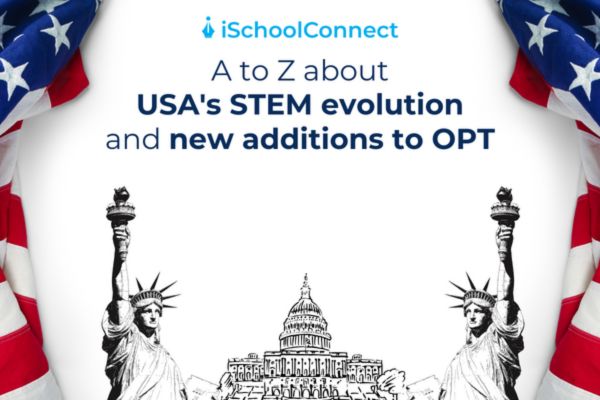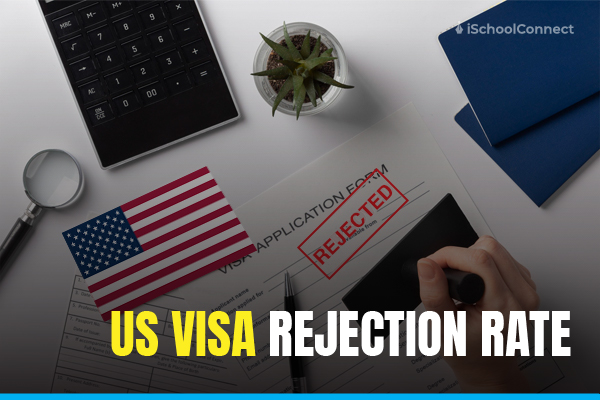Table of Contents
The Evolution of STEM in the USA
Technological innovation and scientific advancements have long been at the forefront of the higher education system in the USA. The country’s commitment to fostering a robust STEM (Science, Technology, Engineering, and Mathematics) ecosystem is pivotal in its continued leadership in these fields. One of the essential programs supporting STEM graduates in the USA is the Optional Practical Training (OPT) program. In this blog, we will explore the evolution of STEM in the USA and the new additions to the STEM OPT program, highlighting the significance of these changes for international students pursuing STEM careers in the United States.
A brief overview of STEM in the USA
Whether it’s the space race or the development of the internet, STEM education and research have always been a cornerstone of American progress. The USA has consistently invested in STEM fields, leading to groundbreaking discoveries and innovations. American universities have been magnets for international students seeking world-class education and research opportunities in STEM disciplines.
Over the years, the USA witnessed a steady rise in the number of international students pursuing STEM degrees at its universities. This influx of talent has contributed to the diversity of American campuses and fueled the country’s scientific and technological advancements.
The Optional Practical Training (OPT) program
International students have to work in their chosen field of study to gain practical experience. The OPT program is a crucial component of the US’s immigration system, allowing international students on F-1 visas to work in their field of study. This program has been instrumental in retaining international STEM talent in the USA. This program helps graduates with valuable work experience in their chosen field, facilitating a smooth transition from academia to industry.
Historically, OPT offered STEM graduates a standard 12-month work authorization period following their studies. However, recognizing the need to retain skilled STEM professionals, the US government introduced the STEM OPT extension in 2008. This extension allowed STEM graduates to work for an additional 17 months, totaling 29 months of post-graduation employment.
Recent changes to the STEM OPT program

In response to the rapidly evolving global technology landscape and the need for a competitive STEM workforce, the US government has made significant enhancements to the STEM OPT program. These changes have further solidified the USA’s commitment to attracting and retaining international STEM talent.
- Extended STEM OPT period- In 2016, the US government extended the STEM OPT program to 24 months. It grants STEM graduates the opportunity to work in the USA for a total of 36 months after graduation. This extension provides ample time for international students to gain valuable work experience and contribute to American innovation.
- Employer requirements- The updated STEM OPT program introduced stringent requirements for employers. It ensures that STEM graduates receive quality training and mentorship during their employment. Employers now have to submit a formal training plan and conduct regular evaluations of the STEM OPT employees.
- Reporting requirements- STEM OPT participants must now report their employment status and changes to their educational institution’s designated school official (DSO). These reporting requirements help monitor compliance with the program’s regulations and safeguard the interests of both students and employers.
- Cap-gap relief- The STEM OPT program also provides cap-gap relief, allowing F-1 students with pending H-1B petitions to remain in the US and continue working while waiting for their H-1B visa to be approved.
STEM designation expansion
The list of STEM-eligible degrees has expanded, fostering greater program inclusivity. The included courses are-
- Landscape architecture – Students who complete this program will prepare for autonomous professional practice in landscape architecture and for research into other related fields. The fundamental aspects of landscape architecture are planning, designing, and managing outdoor spaces. It also focuses on creating functional and aesthetically pleasing environments.
- Institutional research – The systematic process of collecting, analyzing, and interpreting data and information within an educational institution or organization is institutional research. Students who complete this program can work as institutional researchers in postsecondary institutions.
- Mechatronics, robotics, and automation engineering technology/technician – This course prepares students to assist engineers in the idea, development, and operational evaluation of autonomous, computer-controlled electro-mechanical systems. It uses core engineering principles and technical competence to help them gain technical skills.
- Composite materials technology/technician –It is a program that equips students with the technical know-how and fundamental engineering principles. It supports engineers and other professionals engaged in creating, manufacturing, and using composite materials in wind turbines, boats, automobiles, and other high-tech applications.
- Linguistics and computer science – The program focuses on the relationship between computer and human language and the use of computational approaches in natural language.
- Developmental and adolescent psychology – The scientific research of psychological development and growth is a major focus of this curriculum. It involves research on the many stages of psychological changes people go through from adolescence to adulthood.
- Geospatial-intelligence – This course trains students to analyze security and intelligence challenges from a geographic perspective. This course trains students by relating human behaviors to cultural, political, economic, social, and physical settings.
- Demography and population studies – It is a course that strongly emphasizes the scientific research of population models and phenomena. It also focuses on related problems with social structure and behavior.
The significance of these changes
These recent additions to the STEM OPT program signify the USA’s determination to remain at the forefront of STEM innovation. Here are some takeaways-
- Enhanced competitiveness- The extended STEM OPT period and expanded eligibility make the USA a more attractive destination for international STEM aspirants. It allows them to gain valuable experience and contribute to American businesses and research institutions.
- Knowledge transfer- STEM OPT participants bring fresh perspectives and global insights to American companies and research organizations. This knowledge transfer enriches the country’s technological landscape and fosters innovation.
- Strengthened relationships- The collaboration between American universities, employers, and international STEM graduates nurtures lasting relationships that transcend borders, benefiting global science and technology communities.
- Economic impact- The contributions of STEM OPT participants to the US economy are substantial. They drive economic growth and job creation as they enter the workforce and contribute to research and development.
Read more: Automation in Education
Key takeaways
- The United States has consistently invested in STEM fields, attracting international students and contributing to its scientific and technological advancements.
- The Optional Practical Training (OPT) program allows international STEM graduates to work in their field of study for a specified period after graduation, aiding their transition from academia to industry.
- The STEM OPT extension allows STEM graduates to work for an additional 24 months, totaling 36 months of post-graduation employment.
- The extended STEM OPT period and eligibility improvements make the USA a more attractive destination for international STEM students.
We hope you found this blog valuable for your understanding of STEM education and the OPT program in the USA. If you have any questions or need further information about international education, please don’t hesitate to reach out to us. We are here to assist you with any inquiries you may have.
Liked this blog? Read next: University of Sydney | Study here for an enriching experience!
FAQs
Q1. Who is eligible for a STEM OPT visa?
Ans- To be eligible for a STEM OPT visa, you must have at least a bachelor’s degree, your job must be directly relevant to your chosen field of study, and the business company you are working for must have an E-Verify program registration.
Q2. Can I travel to other countries on STEM OPT?
Ans- You may travel abroad if your OPT has authorization and you possess an EAD card.
Q3. What happens if the STEM OPT application gets rejected?
Ans- If the authorities turn down your OPT application due to mistakes in the papers you provided, and your I-20 hasn’t yet expired, then you can reapply for OPT. Ensure that the documents are up to par by submitting your fresh application within 30 days of receiving the denial notice.






